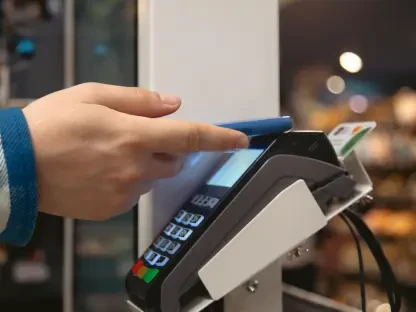I’m thrilled to sit down with Zainab Hussain, a renowned e-commerce strategist with deep expertise in customer engagement and operations management. With years of experience navigating the rapidly evolving landscape of digital payments and merchant services, Zainab offers invaluable insights into the challenges and opportunities shaping the industry. In this interview, we explore the growing divide between traditional banks and digital payment providers, the impact of technology and reliability on merchants, and the global trends driving the future of non-cash transactions.
Can you walk us through why banks are finding it tough to meet the demands of ecommerce merchants today?
Absolutely. Banks are struggling primarily because their infrastructure and processes haven’t kept pace with the speed and flexibility that ecommerce merchants need. Many still rely on legacy systems that aren’t built for the always-on nature of online retail. Merchants face issues like slow transaction processing and unexpected downtime—up to nine hours annually, according to recent reports. That might not sound like much, but in ecommerce, even a few minutes of downtime can mean lost sales and frustrated customers. On top of that, satisfaction with bank services is strikingly low, especially among small and mid-sized merchants who often feel neglected compared to larger clients.
How do digital-first payment providers stand out from banks in supporting merchants?
The difference is night and day in several areas. Digital-first providers are built for speed and efficiency. Take onboarding, for instance—banks can take up to a week and charge nearly $500 to set up a new merchant, while digital rivals can get someone live in under an hour for less than half that cost. Beyond onboarding, digital providers prioritize user-friendly platforms and integrations that cater specifically to ecommerce needs. They’re more agile, often rolling out updates or new features in real-time, whereas banks are bogged down by regulatory hurdles and older tech stacks.
What’s behind the trend of so many merchants considering a switch to new payment providers?
A significant chunk—about 40% of merchants—are looking to switch because they’re frustrated with the status quo. A lot of this dissatisfaction ties directly to banks’ inability to deliver consistent reliability or competitive costs. Merchants are also dealing with pain points like fraud, which eats into an average of 2% of their revenue, and outages that disrupt their operations. When digital providers offer faster, cheaper, and more reliable alternatives, it’s no surprise merchants are tempted to make the leap, especially smaller businesses that can’t afford these setbacks.
In what ways are digital payment companies outpacing banks with technology adoption?
Digital payment firms are leading the charge in adopting cutting-edge tech. For example, 60% of payment specialists are already using generative AI to optimize operations or enhance customer experiences, compared to just 41% of banks. They’re also ahead in areas like payment orchestration, where 70% have implemented solutions versus only 47% of banks, and in digital identity frameworks, which are crucial for security. This tech edge allows them to offer seamless, secure, and tailored services that banks often struggle to match due to slower innovation cycles.
Fraud and reliability seem to be major headaches for merchants. Can you unpack why these issues are so critical?
Fraud and reliability are make-or-break for merchants because they directly hit the bottom line and customer trust. Only about a quarter of banks feel confident in their fraud-prevention systems, which is alarming when merchants are losing significant revenue to fraudulent transactions. Reliability is just as critical—when payment systems go down, merchants can’t process sales, and customers abandon their carts. This erodes trust not just in the bank but in the merchant’s brand. Digital providers often have more robust systems in place, which is why merchants are increasingly looking their way for solutions.
What’s driving the massive growth in non-cash transactions we’re seeing globally?
The surge in non-cash transactions—projected to more than double by 2029—is largely fueled by the rise of digital wallets and instant payment systems. These methods have grown from 13% of the payment mix a few years ago to 25% today because they’re fast, convenient, and often cheaper than traditional options. Meanwhile, even though card payments are still growing in volume, their share is shrinking as consumers and merchants adopt these newer alternatives. It’s a shift driven by both technology and changing consumer behavior, especially among younger demographics.
How do regional differences play into the growth of digital transactions around the world?
There’s a stark contrast between regions. Asia-Pacific, for instance, is seeing explosive growth—800 billion digital transactions in 2024 with a projected 21% increase this year—largely because of widespread mobile payment adoption and supportive infrastructure. North America, on the other hand, is growing at a slower 7% pace with about 256 billion transactions, as cards remain dominant. Cultural preferences, regulatory environments, and tech penetration all play a role. In Asia-Pacific, leapfrogging to mobile-first solutions has been easier, while North America’s entrenched card culture slows the shift.
What’s your forecast for the future of digital payments and the role of banks versus digital providers?
I believe digital payments will continue to dominate, with non-cash transactions becoming the norm across more markets by the end of the decade. Digital providers will likely maintain their edge in innovation and speed, capturing more market share unless banks radically transform. However, banks have a window of opportunity if they can leverage their strengths—like trust and financial stability—and invest in modernizing their tech and processes. We might see more partnerships between banks and fintechs as a way to bridge the gap, but the competition will only intensify as merchants demand more seamless, cost-effective solutions.









